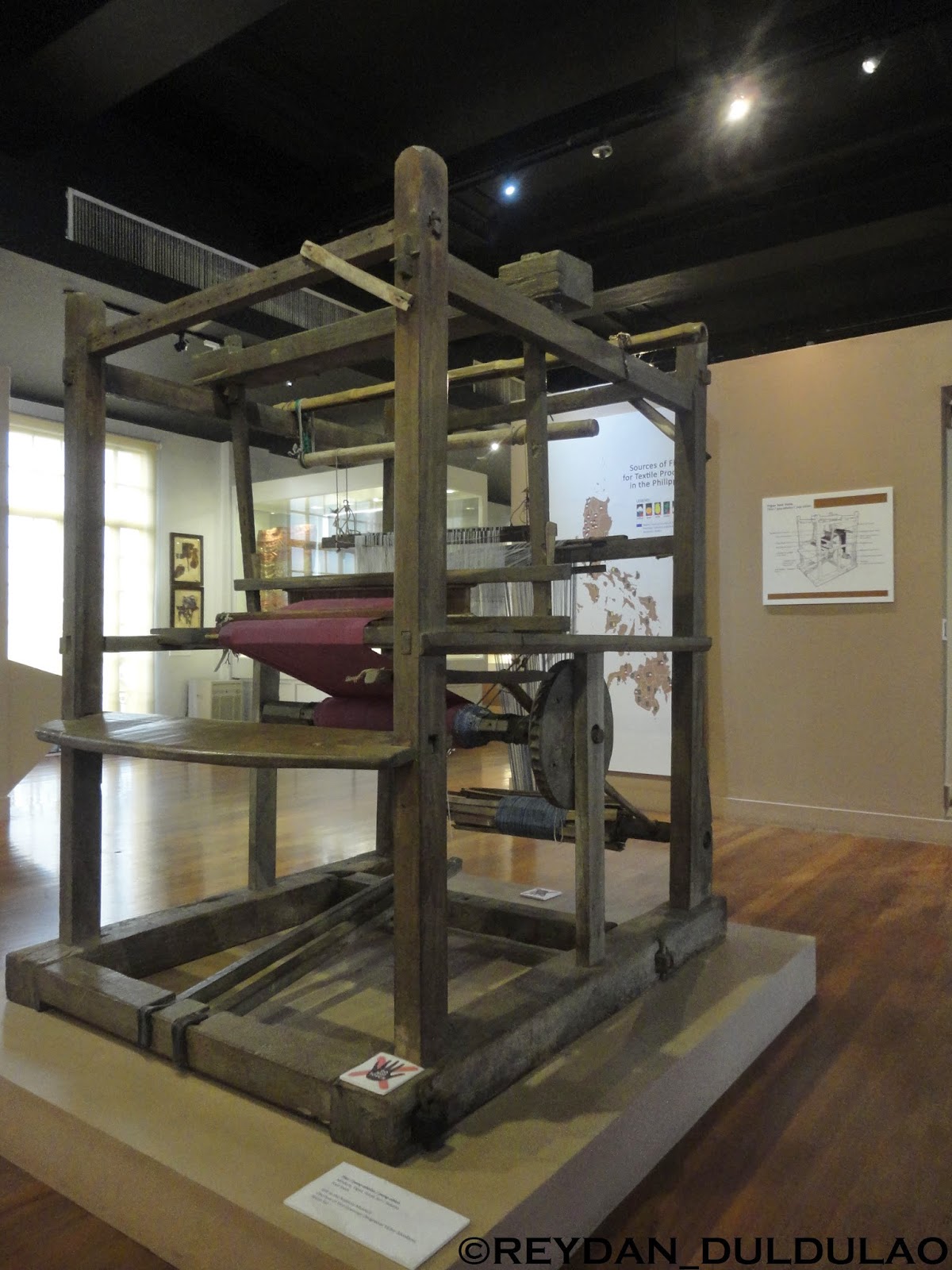 |
| The Artistry of Philippine Textiles |
 |
| Blouse |
Blouse
Central Panay / Sulod Bisaya
Commercial cotton cloth and threads
This embroidered cotton blouse with floral, butterfly and geometric designs comes from the Sulod group inhabiting the mountains along the banks of Panay River between Mt. Sya and Mt. Baloy. Anthropologist, F. Landa Jocano, studied with them and recorded his work in the book Sulod Society: A study in the Kinship System and Social Organization of a Mountain People in Central Panay (1968). During his research, he also photographed and collected Sulod material culture, including this blouse.
 |
| Vigan foot loom |
 |
| Abaca and Cotton |
Abaca fibers are traditonally extracted from a cut trunk by separating the surface leaf sheaths using a sharp object or knife, and pulling them off the trunk by hand. The fibers are knotted to form a continuous thread that would be suitable for weaving. Lanot is the general term for abaca used by the Bisayan groups as well as Mindanao groups such as the Mandaya. The Manobo sometimes also use the term yanot.
Cotton:
For the weaving, called hablon, the Hanunoo of Southern Mindoro cultivated cotton (Gossypium spp.), which they call burak. Seeds of the dried cotton are separated from the fibers, which are spun into threads by means of a manual spindle called burungan. Spun threads are dyed using the tayum plant (Indigofera tinctoray L.).
 |
| Natural Dyes in the Philippines |
 |
| Sources of Fibers for Textile Production in the Philippines |
 |
| Traditional Weaving Centers |





No comments:
Post a Comment